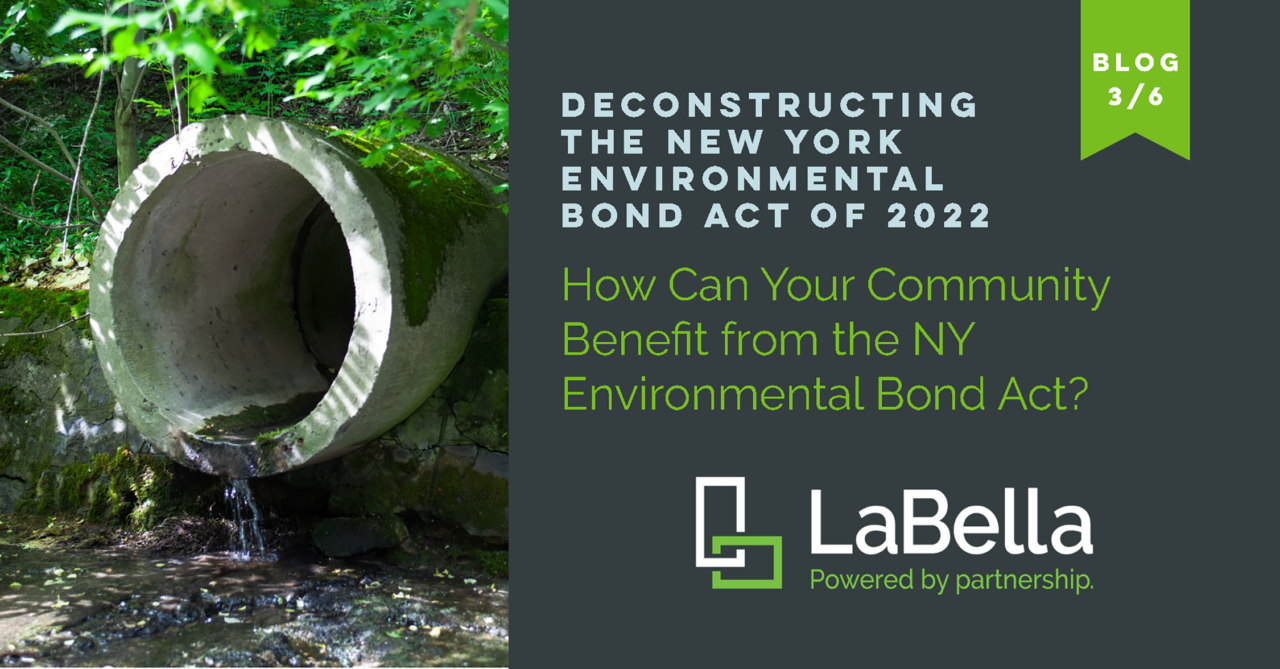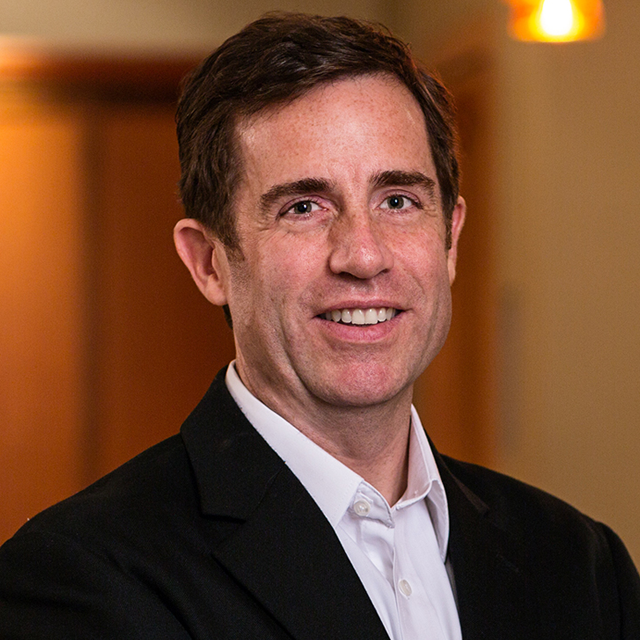How Can Your Community Benefit From the NYS Environmental Bond Act of 2022?

At the end of 2022, we provided a summary of the $4.2 billion Clean Water, Clean Air, and Green Jobs Environmental Bond Act of 2022. As a refresher, the act provides $1.1 billion for restoration and flood risk reduction, $1.5 billion for climate change mitigation, $650 million for water quality improvement and resilient infrastructure, and $650 million for open space land conservation and recreation.
As we begin the new year, we would like to offer information on how the act will benefit municipalities to upgrade infrastructure. Below is a summary of how funding will be allocated under the various subcategories; what kinds of programs, plans, and projects will be eligible; and which agencies are directed to implement the program.
Title 3: Restoration and Flood Risk Reduction ($1.1. Billion)
Allocation of Funds
While the full amount will be available for restoration and flood risk reduction, up to $250 million may be set aside for the state to purchase private real property identified as at-risk to flooding. Additionally, up to $100 million each may be set aside for coastal rehabilitation and shoreline restoration projects which address flooding.
Programs, Plans, and Projects
The most relevant programs, plans, and projects that municipalities will benefit from include:
- Projects identified in state and regional management and restoration programs and plans for waterways, waterfronts, or watersheds
- Projects in Local Waterfront Revitalization Plans (LWRPs)
- Coastal and shoreline rehabilitation and restoration projects
- Flood risk reduction projects, including:
- Acquisition of property
- Moving, lifting, or raising of flood-prone infrastructure or structures
- Relocating, repairing, or raising of flood-prone roadways
- Removing, altering, or right-sizing dams, bridges, and culverts
- Restoration projects, including:
- Floodplain, wetland, and stream restoration
- Habitat restoration projects
Which agencies will implement the programs?
The act provided general information on which agencies will be involved in implementation through grant assistance. As noted in the last section of this blog article, LaBella anticipates many of these will be implemented in existing programs through the agencies. The Department of Environmental Conservation (DEC); the Office of Parks, Recreation, and Historic Preservation (OPRHP); and the Department of State (DOS) will provide grants for state and regional waterway, waterfront, or watershed projects; LWRP projects; and coastal and shoreline rehabilitation and restoration projects. The DEC and OPRHP will also provide grants for flood risk reduction projects and restoration projects.
Title 7: Climate Change Mitigation ($1.5 Billion)
Allocation of Funds
While the full amount will be available for climate change mitigation, up to $400 million may be set aside for green building projects, $100 million for climate adaptation and mitigation, $200 million for water and air pollution impacting disadvantaged communities, and $500 million for the purchase of zero-emission school buses.
Programs, Plans, and Projects
The most relevant programs, plans, and projects that municipalities will benefit from include:
- Climate adaptation and mitigation projects, including:
- Construction of natural resiliency measures, conservation, or restoration of riparian and tidal marsh areas
- Nature-based solutions such as wetlands and mapping or natural wetlands to protect against sea level rise, storm surges, or flooding
- Relocating and retrofitting facilities to address climate change
- Flood risk reduction
- Climate change adaptation planning, including vulnerability and risk assessments to municipal infrastructure
- Urban forestry projects (e.g., forest/habitat restoration, street trees)
- Reduction in urban heat islands (e.g., green roofs, cooling centers, open spaces)
- Reduce/eliminate water and air pollution in disadvantaged communities
Which agencies will implement the programs?
The DEC and OPHRP will provide grants for the projects listed.
Title 9: Water Quality Improvement and Resilient Infrastructure ($650 Million)
Allocation of Funds
While the full amount will be available for water quality improvement and resilient infrastructure, up to $200 million may be set aside for wastewater infrastructure projects and $250 million for municipal stormwater projects.
Programs, Plans, and Projects
The most relevant programs, plans, and projects that municipalities will benefit from include:
- Controlling stormwater runoff, and using green infrastructure where practicable
- Reducing agricultural nutrient runoff and nonpoint source abatement
- Addressing harmful algae blooms with projects focused on nutrient reduction, wastewater systems that treat nitrogen and phosphorous, and lake treatment systems
- Wastewater infrastructure projects
- Riparian buffers between farm field and streams to reduce erosion
- Replacing lead service lines
Which agencies will implement the programs?
The DEC will provide grants for the projects listed.
Title 5: Open Space Land Conservation and Recreation ($650 million)
This funding program will be covered in detail in our next blog in the series. Look for that article to publish next week.
Next Steps
While we know this is a lot of information, LaBella’s planning team are experts in municipal grant programs. We suggest providing a list of potential projects that fit into these categories to experts in grants to help them identify programs that could benefit your community, as well as other grant programs that could complement or match these programs. Our grant experts anticipate that most of these programs will be implemented through existing grant programs, with additional funding from resources such as the Water Quality Improvement Program (WQIP), the Local Waterfront Revitalization Program (LWRP), and the Environmental Protection Fund (EPF).
Also note that the state has set a goal of providing 40% of the funds to disadvantaged communities (and no less than 35% of the funding). You can check this map to determine if your project is located in a potential disadvantaged neighborhood, area, or community.
What’s Next?
Next up, we’ll take a look at the funding available for Open Space Land Conservation and Recreation projects and strategies for improving your chances at being awarded funding for these types of projects.
Missed the previous articles in this series? Check them out below!
Introduction to the NYS Environmental Bond Act of 2022
The NYS Environmental Bond Act’s Impact on Climate Resilience Work

About the Author
Ed Flynn, AICPDirector of Planning
Ed is a certified planner with over 30 years of experience in planning, economic development, and downtown revitalization, including 13 years as the City of Batavia’s Director of Community Development. His extensive experience working with elected officials, community groups, and municipal staff has resulted in successful, award-winning projects. Ed is passionate about helping communities be a better version of themselves and enjoys shepherding a community’s revitalization journey from concept to reality.